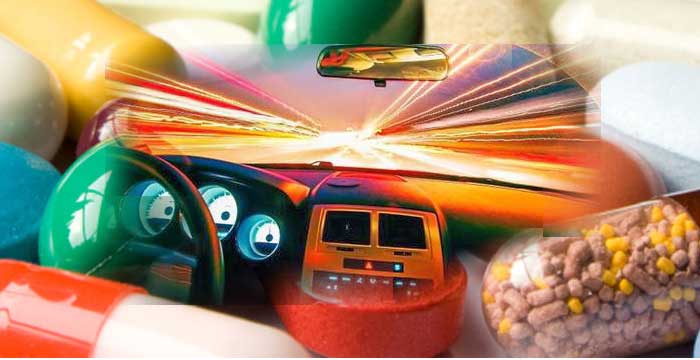The effects of drugs behind the wheel
agosto 29, 2014 por DriveSmart
We are not going to tell you that drugs are dangerous, that they are addictive, that consuming them can destroy anyone’s life. You already know it. You have read about it and heard it hundreds of times. For sure.
Almost all about drugs, except…
There are numerous studies related to the type of consumer of each drug, reports about which are the most popular and of which the demand increases or decreases depending on the economic situation… Anyone can learn all about drugs: how each one of them is consumed, how they are distributed, how they are adulterated, how much they cost and where to get them.
However, most people are usually not aware (because very few talk about it) of the specific effects that drugs cause to those that consume them. We invite you to join us on this journey of the effects of cannabis, cocaine, ecstasy, LSD and amphetamines behind the wheel. Warning: the trip will not be pleasant …
 Driving under effects of cannabis…
Driving under effects of cannabis…
- Causes a feeling of relaxation that can cause drowsiness behind the wheel.
- Changes the perception of the surroundings. For example, it distorts the vision of colors.
- Alters the perception of time and space, therefore the driver may have trouble judging distances.
- Causes a loss in the concentration capacity, which increases the possibilities of getting distracted behind the wheel.
- Increases the time to react. This also increases the distance the car covers before it can stop in case of an emergency.
 Driving under the effects of cocaine…
Driving under the effects of cocaine…
- Changes behavior: the driver becomes impulsive, competitive and even aggressive with other drivers. This change usually leads to serious errors behind the wheel.
- Leads to overrating the driving abilities and the capacity of taking higher risks.
- Causes a more dangerous driving, thus increasing infractions.
- Alters the perception of the surrounding traffic.
- Diminishes the concentration capacity, therefore it is easier to get distracted.
- Sometimes it causes sudden drowsiness.
- Multiplies the accident risk if it is consumed with alcohol (Discover the false myths of alcohol) more than with any other of these substances.
 Driving under the effects of extasis (MDMA)…
Driving under the effects of extasis (MDMA)…
- Produces optical illusions. For example, flashes on the periphery of the visual field, which can cause performing dangerous evasive maneuvers.
- Increases the sensitivity to light and therefore increases the likelihood of glare and episodes of blurred vision.
- Decreases attention and the ability to concentrate during traffic, which can lead to having an accident.
- Results in an unpredictable behavior that has the potential of causing episodes of depression or anxiety, which are very dangerous while driving.
- After the immediate effects of its consumption, it leads to a period of physical and mental exhaustion.
- Causes the experience of flashbacks, episodes in which the effects of the drug reappear after having ceased for several hours.
 Driving under the effects of LSD…
Driving under the effects of LSD…
- It can have the effect of perception distortions, even of hallucinations, that have the result of an incomprehensible behavior on the road dangerous for other drivers.
- Causes emotional alterations that can result in an aggressive reaction behind the wheel. It also causes anxiety, even panic, during driving. This type of effects can last up to 10 or 12 hours and reappear unexpectedly during that period of time.
- Produces flashbacks on the wheel, in other words, periods of time in which the effects of the drug can reappear.
 Driving under the effects of amphetamines…
Driving under the effects of amphetamines…
- Causes a feeling of euphoria and excitement, resulting in an impatient or impulsive behavior, which can likely lead to making serious mistakes behind the wheel.
- Increases violent and/or unexplainable reactions that are incomprehensible to other drivers.
- Leads to overrating one’s own driving abilities, so the level of risk increases.
- It can result in repetitive and stereotyped movements that limit mobility.
- Decreases the feeling of fatigue and it can cause experiencing severe exhaustion that can lead to serious health and safety consequences.
- Delays the onset of sleep, and can have a rebound effect after several hours causing an irresistible urge to sleep.

 Driving under effects of cannabis…
Driving under effects of cannabis… Driving under the effects of cocaine…
Driving under the effects of cocaine… Driving under the effects of extasis (MDMA)…
Driving under the effects of extasis (MDMA)… Driving under the effects of LSD…
Driving under the effects of LSD… Driving under the effects of amphetamines…
Driving under the effects of amphetamines…
Deja una respuesta